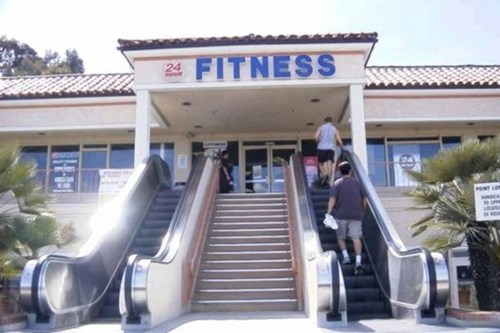Chrissie is a health and fitness entrepreneur; publishing over 13 fitness books and running a company of 40 professional health practitioners for 20+ years. Her qualifications in health, fitness and pedagogy have led to her lecturing for schools, universities and providing health interventions for major companies and the NHS.

I’ve always found it ironic that whenever attending numerous health conferences on physical activity or obesity, discussing how to get the general public moving more, 99% of the time is spent sitting down talking about it, with no movement whatsoever! This picture, perhaps, sums up the point better:

Every day, opportunities are missed to get the body moving as part of our normal schedules, and none more so than when huge sporting events are on the TV. Whilst the focus is on the great sporting heroes and their amazing feats of endurance and skill, the rest of us sit still to watch, drinking beer and jumping up only for the most amazing goal, or to replenish our sugar laden sports drink from the fridge. Claudia Hammond, writing for BBC Future in 2016, and investigating whether big sporting events resulted in more sport being played, made a similar point. She explained how her commitment to going for a run drained away as the Davis Cup match she was watching continued and in the end she gave up and stayed on the sofa. She also expressed a desire, that many of us can relate to, of wanting to play the sport as she is watching it:
“But I’ve been thinking that for almost twenty years now without actually setting foot on a court.”
Another global sporting event has just started, the World Cup; a mammoth football-fest that comes around every four years and attracts even larger audiences than the Olympics. Russia started with a bang of five goals against Saudi Arabia and Gareth Southgate has the England team playing darts with the press hounds, to relax them. But should the audiences be encouraged to relax less and move more while watching? Throughout the Olympics the BBC had adverts and web addresses that encouraged how to ‘take part’ and some studies have shown (Thorne, 2015) that gym memberships, for example, can increase after a sporting event, although eventually levels return to the norm. Yet, is there an opportunity to get the global audience moving while they watch? Obesity after all is not just a UK problem and sedentary behaviour has been identified as a health hazard by numerous research (Edwardson, 2018). We now have the possibility of treadmill desks and standing desks for offices – maybe we need a step machine for watching TV? Maybe we need to power our TV screens by pedalling our bike arm chairs? Maybe the TV channels should issue every household with a football with which we could practice ball skills during every advert or recap break?
PE teachers have the right idea – you only have to look at Twitter to see the how they use the World Cup to inspire movement ideas. Live Well Tameside, for example, tweeted:
“Our road to the Russian world cup [sic] starts today where children will enjoy fun engaging football and Russian dance sessions during PE.”
Football fever can be a force for fitness, Gordon Strachan, speaking to students at the UCFB Future Leaders in Football & Sport Conference, asserted that “we are the most inclusive sport in the world” so let’s include everyone in moving as we watch and marvel (or hide our eyes when England don’t score) and let’s think of ways to keep moving during watching. The government still have their Nudge department, now rebranded as the Behavioural Insights Team, so send your ideas to info@bi.team.
One final thought – should you choose the sport you watch based on how long the games are? At least a football game only lasts 90 minutes – if you follow tennis ace, Andy Murray, like I do, you can be on that sofa for well over three hours and, yes, my heart rate and blood pressure will be raised but not, necessarily, in the right way!













